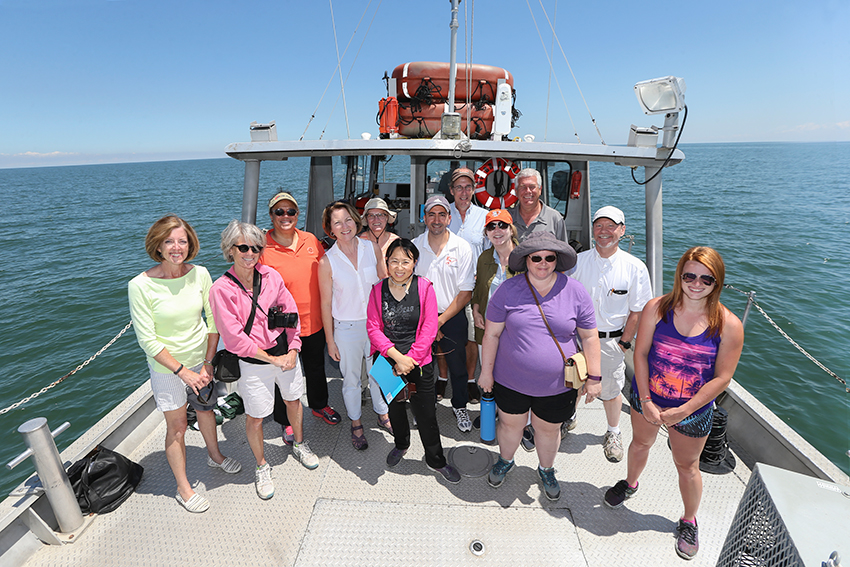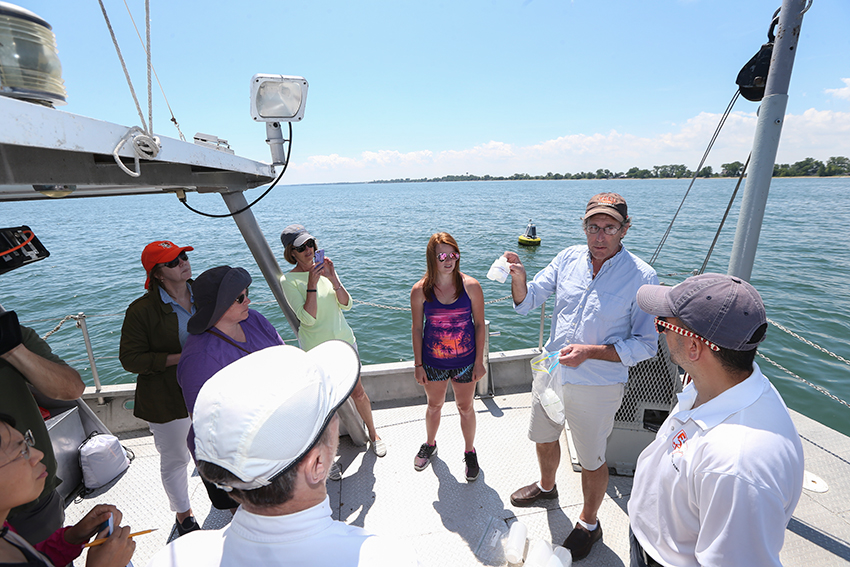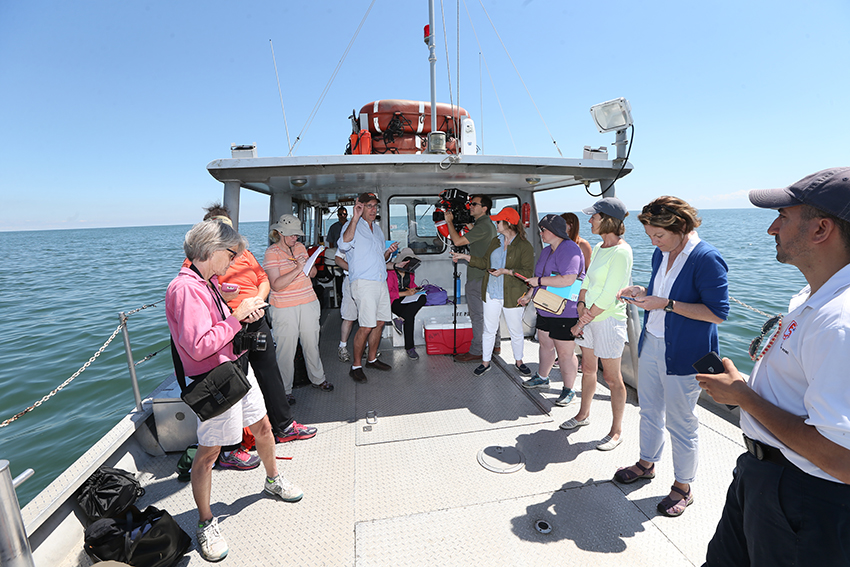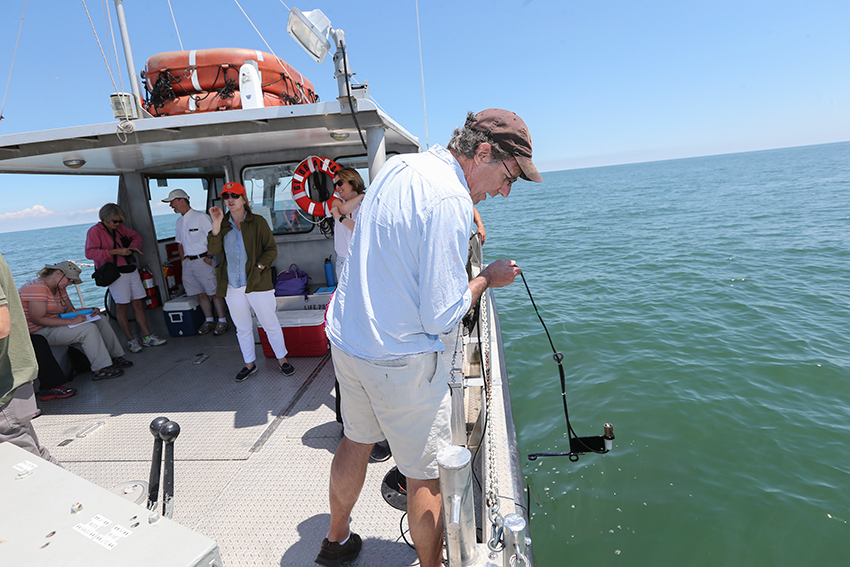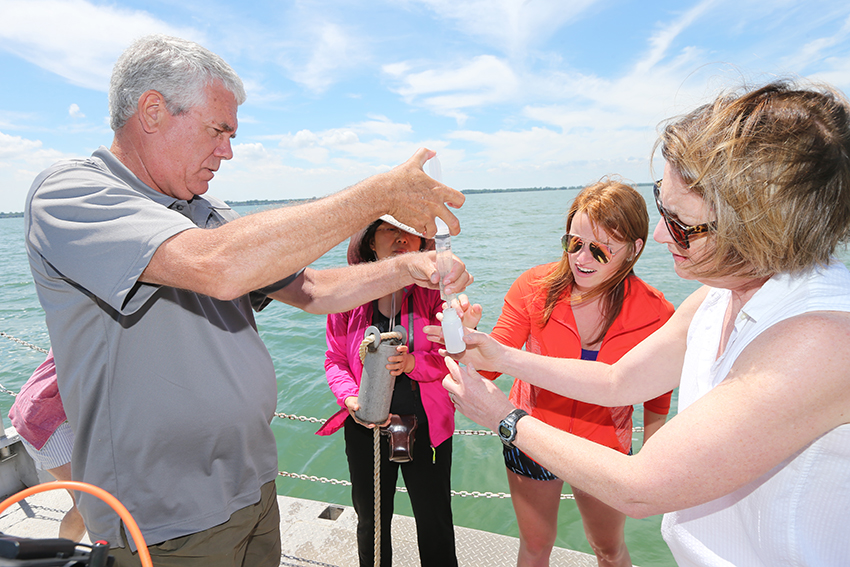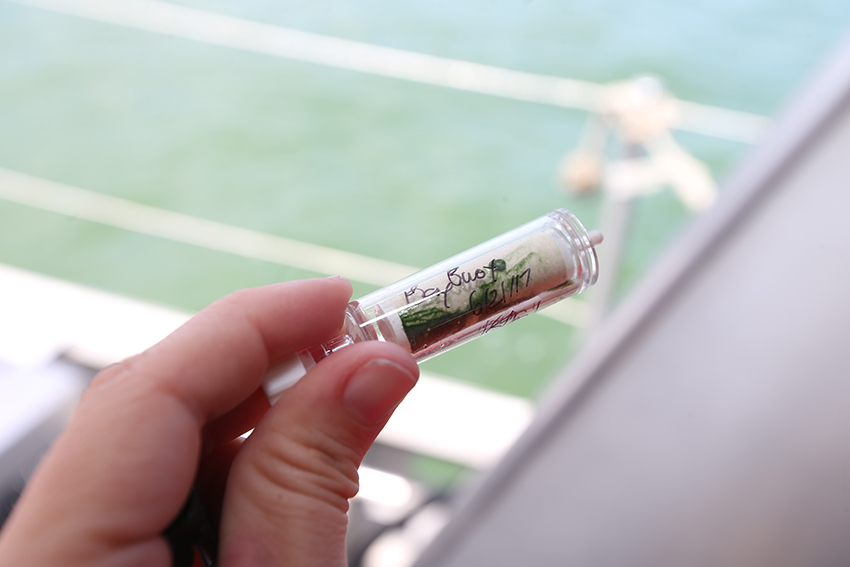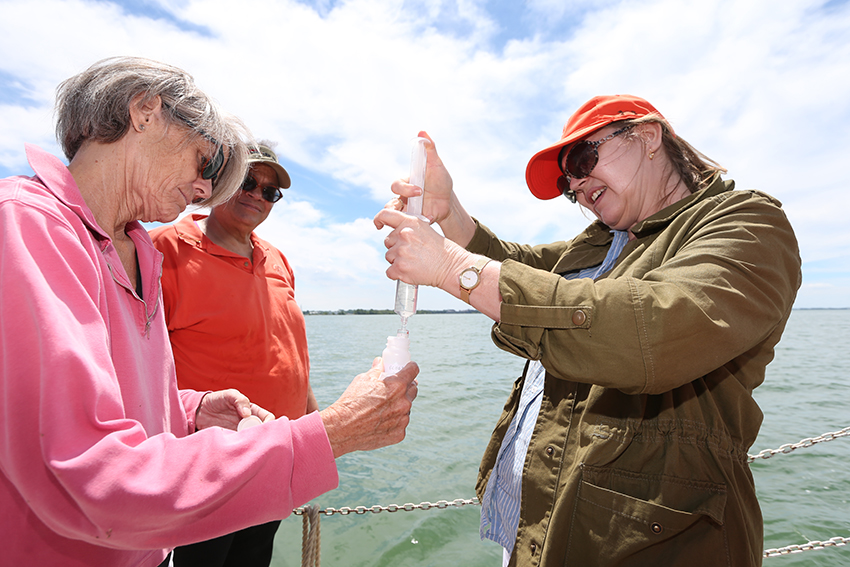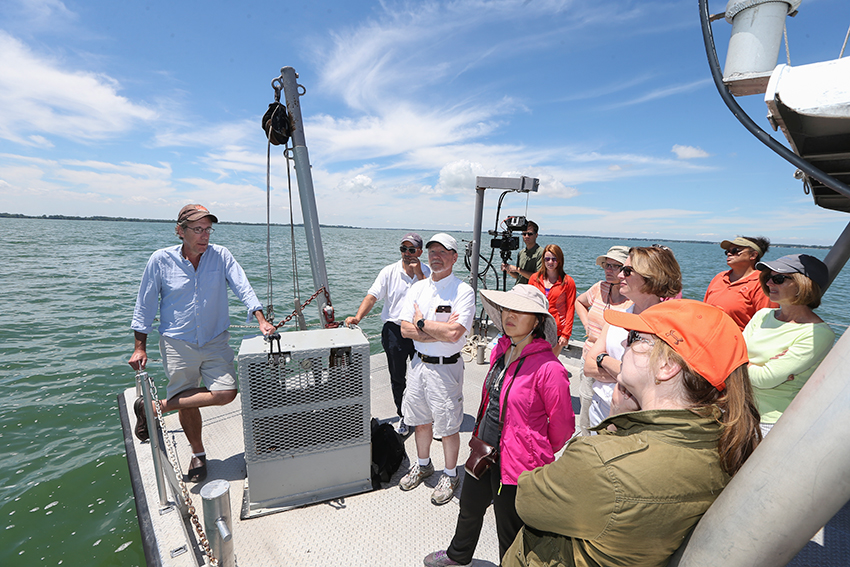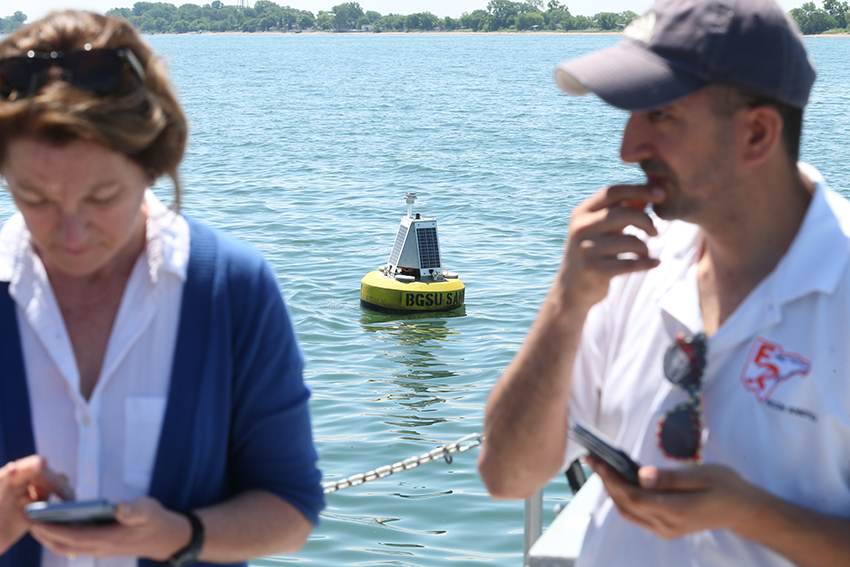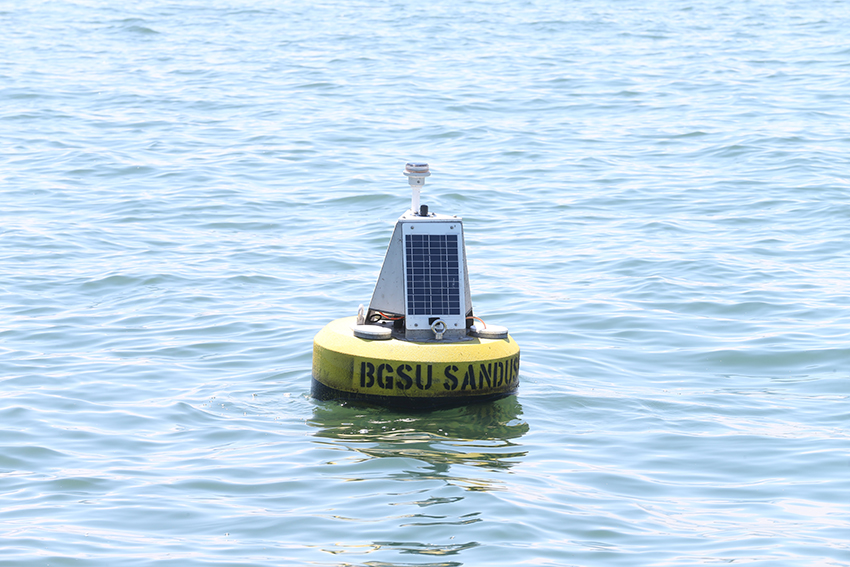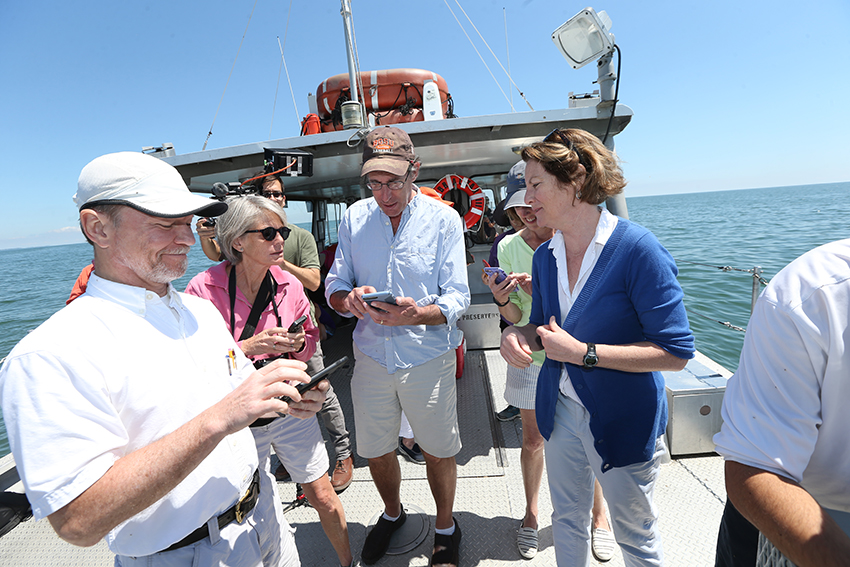Lake Erie teaches important lessons to BGSU faculty
Project SEA Change an opportunity to learn about hands-on STEM education, undergraduate research
By Bonnie Blankinship
An intrepid group of Bowling Green State University and Owens Community College faculty and administrators recently set sail to learn more about hands-on STEM education and undergraduate research. Assuming the role of students, they learned from biologist Dr. George Bullerjahn, Professor of Research Excellence, how to collect samples for water quality testing and about BGSU research into the toxic algae that often invades Lake Erie and Sandusky Bay.
The June 21 shipboard experience was part of Project SEA Change, a five-year, $3 million National Science Foundation grant received by Dr. Moira van Staaden, a professor of biological sciences, to introduce new ways of thinking about STEM pedagogy. Spending the day on the water together aboard the Ohio State University research vessel Gibraltar III gave the participants the opportunity to get out of their respective disciplinary silos, and to increase their understanding of science and the process of science while learning about an environmentally relevant issue.
“STEM teaching can be very powerful when it’s embedded in a robust research environment,” van Staaden said. With a varied group, many of whom are not in STEM disciplines, the boat experience elicited varied reactions and much enthusiasm.
“I was happy to be invited to come along. Lake Erie is our backyard and I am eager to understand what it looks like from the science point of view,” said Lynn Whitney, associate professor and head of the photography division in the School of Art. “I’ve been photographing the Lake Erie shores for a long time, and I would like to inject some of the science of it into my pictures, to make the invisible visible. George was terrific at explaining his research methodologies, and engaging us physically with testing the waters, and making his passion accessible to all of us.”
For microbiologist Dr. Zhaohui Xu, being able to get outdoors was a “special treat” and gave her a new appreciation of the challenges of fieldwork and a better understanding of where the materials she and her students study come from.
“The majority of the time, we stay in the lab,” she said. “The samples we study are already purified and somebody else has gotten them. We lack the experience of doing fieldwork. But I still remember the one time in college when our professor took us to a fermentation station to see what was happening. After all this time, I still remember that very clearly.”
The participants also got to appreciate the student perspective by taking samples, filling in lab books and writing assessments, van Staaden said. Thus, the day saw Dr. Raymond Craig, dean of the College of Arts and Sciences, and Dr. Peggy Booth, interim dean of the Graduate College, drawing up water from the bay to process for analysis of nutrients and DNA — not in their ordinary day’s work but a good approximation of how an undergraduate would feel when first involved in hands-on STEM research.
The group also saw how data is gathered from the sensors BGSU has on buoys in the bay and how they are transmitted wirelessly to the researchers’ computers and cell phones. The process gave Dr. Mohammad Mayyas, an associate professor of engineering technologies and a specialist in robotics, an idea.
The robotics field, or advanced manufacturing, also makes great use of sensor networks, and Mayyas envisioned devising a sensor that would eliminate some of the manual labor of the algae study, a concept he and Bullerjahn can continue to explore.
“Robotics often involves being part of a team, in this case a team that could combine engineering with biology, and would also allow us to involve undergraduates from different disciplines,” Mayyas said. “The trip was exciting and it brought home to me how I might work with my colleagues to bridge science and engineering. I see the value of outreach and approaching one another instead of waiting for people to get to know you.”
In her Community Projects class, Whitney also incorporates hands-on experience. Photography students form partnerships with individuals served through Wood Lane and together each works to understand and know the other through the camera.
“It’s explosive, in the best way, for students. Something really wonderful opens up for them when they try something which may not be familiar to them,” she said. “Thinking about this trip out on the lake, seeing George handle all of us, gave me ideas about approaching the sometimes difficult material in my class.”
Updated: 12/02/2017 12:22AM

